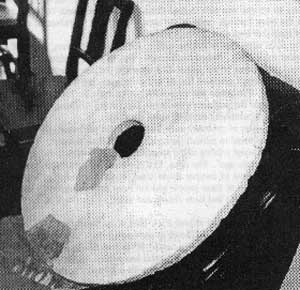
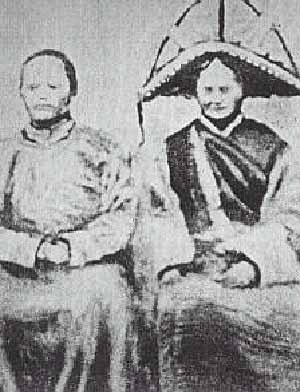


As humanity searches for its extraterrestrial origins since we are not from physical reality - among the enigmatic objects found along the way are the Dropa Stone Discs of Tibet. As the story goes - hundreds of strange disks were discovered in a cave in China that appear to tell the story of an ancient spaceship that crash on Earth approximately 12,000 years ago in the Himalayan mountains of remote Bayan-Kara-Ula in Qinghai on the border of China and Tibet.
There are 12 main stones that are more important than the rest as they tell an all-too-familiar story of gray aliens - allegedly archaeologists whose UFO crashed on planet Earth 12,000 years ago - or did it?
Perhaps some of the facts are correct or maybe this is just another subroutine in the simulation of our reality that repeats in algorithmic patterns in each civilization having a common thread or theme that unites them to a central source of design.
Back to the saga of the Dropa or Gray aliens by any name - apparently unable to communicate with local inhabitants at the time their ship crashed they took refuge in caves creating an interconnecting maze system. Petroglyphs on the walls depicted their journey - one all-too-familiar in current storylines about aliens who crashed land on a planet and their plight to return home. Stranded indefinitely - and far more advanced than humans - they set up a way to survive.
Caves contain crystalline walls and structures used for energy, healing, regeneration, communication, teleportation, and more. The Dopa Grays stayed long enough to leave messages for humanity not unlike those found in different parts of the world such as the Ica Stones of Peru communicated with the Dropa and I suppose we could say the Atlanteans as they date back to that timeline when 12 inserts simultaneously materialized in the planet Earth simulation.
Ancient traditions from around the world speak of mysterious disk-shaped artifacts that held tremendous power. The Babylonians claimed to have a disk that stood in for their most powerful deity. The Incan leader Pachacuti attributed his rise to a divine disk that fell from the sky. And treasure hunters have been searching for centuries for the acclaimed "Golden Sun Disk" that was hidden from the Conquistadors when they sacked Peru. Ancient Astronaut theorists propose that these disks were more than just sacred objects, and represent some sort of extraterrestrial technology.
In 1995 when I first began my journey into Crystalinks the Dropa Stones immediately caught my attention. When I looked at the grooved design that very much resembles a vinyl record I knew that's exactly what they were ... a record of humanity's journey. I could hear their harmonic messages as if I had been there when this storylines was first created.
As to the actual Dropa Stones - also spelled with a "Z" - Dzopa Stones - it is in the conspiracy theories of human design that the government would confiscate them for all time.
Perhaps this is just a story or a legend passed down through millennial or maybe this is part of the pattern that occurred as recently as 1947 with the Roswell, New Mexico crash whose lesson it was to teach us that humanity is a biogenetic experiment whose time has come.
Today UFO sightings - or as they are now called UAP - continue as we seek the answers to the age old questions ... Who are we? Why are we where? In the end it's all a simulation or an illusion or a dream depending on your programming to understand reality from beyond the physical experience.
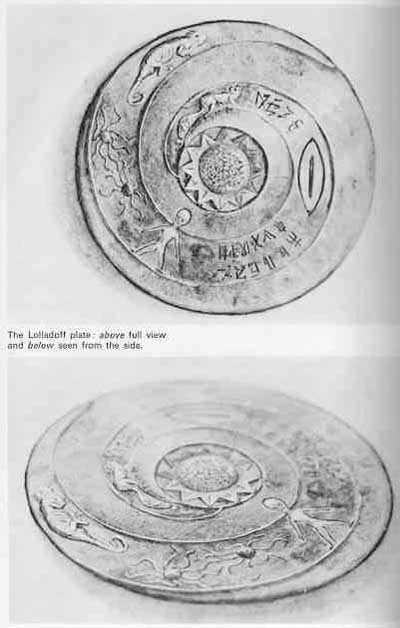
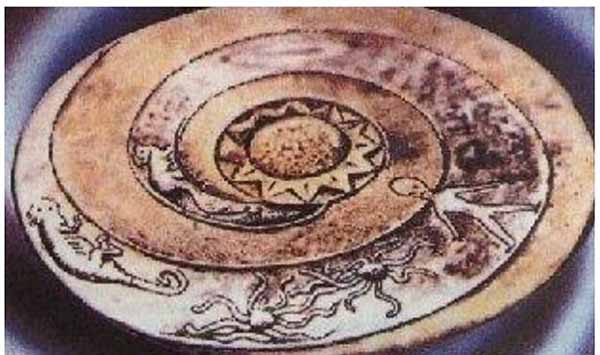
Who were the Dropa? The Dropa are, according to certain controversial writers, a race of dwarf-like extraterrestrials who landed near the Chinese-Tibetan border some twelve thousand years ago. Depictions of the Dropa resemble the alien grays.
The Dropa stones, otherwise known as the Dzopa stones, Dropas stones or Drop-ka stones, are said by some ufologists and pseudo-archaeologists to be a series of at least 716 circular stone discs, dating back 12,000 years, on which tiny hieroglyph-like markings may be found. Each disc is claimed to measure up to 1 foot (30 cm) in diameter and carry two grooves, originating from a hole in their center, in the form of a double spiral. The hieroglyph-like markings are said to be found in these grooves. No record has been found of the stones being displayed in any of the world's museums; therefore they are assumed to be a hoax.
Alleged discovered by Chi Pu Tei, a professor of archaeology at Beijing University and his students were on an expedition to explore a series of caves in the pathless Himalayan mountains of the remote Bayan-Kara-Ula in Qinghai on the border of China and Tibet. The name is Mongolian for "Rich and Black".
Interlinking caves appeared to be artificially carved into a system of tunnels and underground storerooms. The walls were squared and glazed, as if cut into the mountain with great heat.
They found many neat rows of tombs with short 4 ft 4 in inch skeletons buried within. The skeletons had abnormally big heads, and small, thin, fragile spindly bodies. A member of the team suggested that these might be the remains of an unknown species of mountain gorilla. Prof. Chi Pu Tei was said to respond, "Who ever heard of apes burying one another?"
The team then made what was called "the most incredible discovery of all." Half buried in the dirt floor of each cave they found unusual disks, originally referred to as "odd stone disks" and described as "obviously fashioned by the hand of an intelligent creature." These disks were approximately nine inches in diameter and three-quarters of an inch thick. In the exact center was a perfectly round 3/4 inch hole, and etched into its face was a fine groove spiraling out from the center to the rim, making the disk look like some kind of "primitive phonograph record."
One of the best preserved disks was dated to between 10,000 and 12,000 years BC old, older by far than the oldest estimates of the age of the great pyramids of Egypt. This was incredible news, but what was to come would be even more remarkable. A final total of 716 such plates were found, and each held its own mystery. The grooves, upon closer inspection, were not grooves at all, but a continuous line of an unknown writing.
There were no epitaphs at the graves, but instead hundreds of one foot wide stone discs ("Dropa Stones") were found having 3/4 inch wide holes in their centers. On the walls were carved pictures of the rising sun, moon, stars, the land, mountains, and lines of pea-sized dots connecting the earth with the sky. Along with the discs, the cave drawings had been determined to be about 12,000 years old. The disks were labeled along with other finds of the expedition and stored away at Beijing University for 20 years, during which deciphering attempts were unsuccessful.
Many experts tried to translate the hieroglyphs in the 20 years the disc lay in Peking. They all failed. It was not until another professor, Dr. Tsum Um Nui, broke the code and started to decipher the 'speaking grooves' that the full implications of the disc were realized. Realized, that is, only by a select few. The outside world remained in ignorance. For the professor's conclusions on the meaning of the disc were so shattering that they were officially suppressed.
When the disks were closely examined by Dr. Tsum Um Nui of Beijing around 1938. In 1962 he concluded that each groove actually consisted of a series of tiny hieroglyphs of unknown pattern and origin. The rows of hieroglyphics were so small that a magnifying glass was needed to see them clearly. Many of the hieroglyphics had been worn away by erosion. None of the glyphs were of a pattern that had been seen before, and which can only be seen with the use of a magnifying glass.
Dr. Tsum Um Nui announced that he had deciphered them into a story that told of a spacecraft that crash landed in the area of the cave, the Bayan Har Mountains, and that the ship contained the Dropa people. Unable to fix their spaceship they were were forced to adapt to planet Earth.
According to Tsum Um Nui, one of the lines of the hieroglyphs reads, "The Dropas came down from the clouds in their aircraft. Our men, women and children hid in the caves before sunrise. Fearing the strange visitors - the Ham a local tribe at first attacked them. When the Ham finally understood the sign language of the Dropas they realized that the newcomers had peaceful intentions." Another section expresses "regret" by the Ham that the aliens' craft had crash-landed in such a remote and inaccessible mountain range and that there had been no way to building a new one to enable the Dropas to return to their home planet.
Dr. Tsum's report allegedly appeared in a professional journal in 1962. He was subsequently ridiculed to the point of self-imposed exile in Japan, where he died. The Peking Academy of Pre-history never allowed him to publish his findings nor speak of them again.
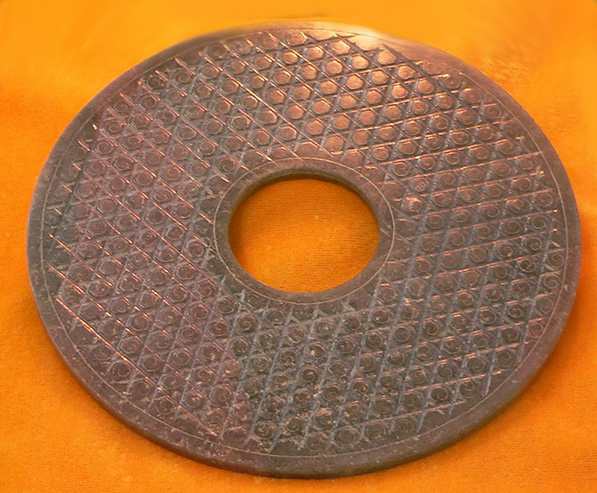
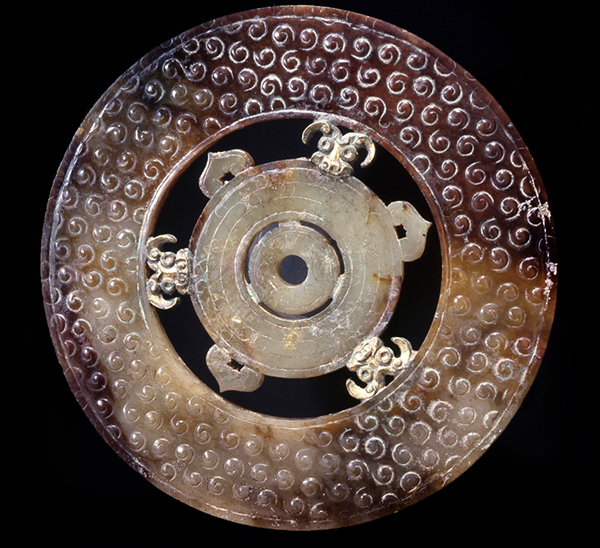
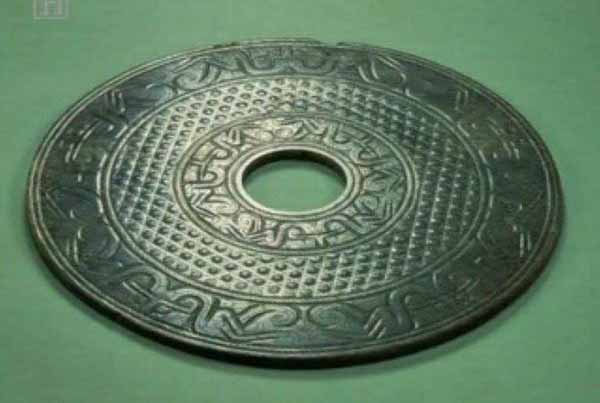
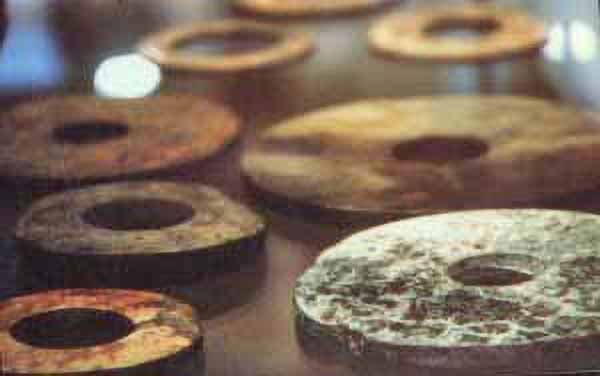
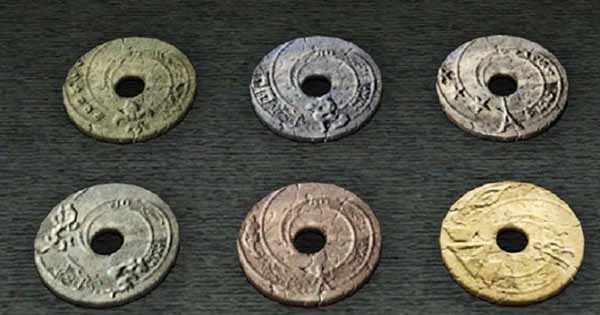
In 1965, Professor Chi Pu Tei and four of his colleagues were finally given permission to reveal their theory. They published it under the title "The Grooved Script concerning Space-ships which, as recorded on the Discs, landed on Earth 12,000 years ago".
The records, some 716 grooved discs later uncovered in the same caves, tell an astonishing story of a space probe sent by the inhabitants of another planet. After landing at the Bayan-Kara-Ula mountain range, the scripts allegedly say, the peaceful intentions of the aliens confused the members of the Ham tribe, inhabitants of the neighboring caves, who hunted down and killed the extraterrestrials.
Photos claiming to show Dropa Disks are in fact Bi Disks, thousands of which have been found throughout China, mostly in the Southeastern Provinces. Bi Disks range in size of a few inches to several feet, and are most commonly made of jade or nephrite, with a round or square small central hole.
Most Bi Disks date to the Neolithic Period (c. 3000 BCE), but are found up to the Shang Dynasty Period. Bi Disks beyond the Shang Period are usually more ornate, carved with dragons, snakes and sometimes fish, and used in ritual ceremonies.
Most Neolithic Bi Disks were found in gravesites, buried beneath the head or feet of the deceased. It is theorized that this was to assist the deceased's spirit. No Bi Disks have been found to contain writing or spiral grooves as described in the Dropa story by authors such as Hartwig Hausdorf.
The Dropa Disks are said to be only 12 inches in diameter. However, one black and white photograph claimed by Hausdorf and others to display a Dropa Disk clearly shows the disk resting on a seat, and it is clearly several feet in diameter and has no markings whatsoever.
Russian scientists asked to see the discs and several were sent to Moscow for examination. They were scraped free of rock particles which had stuck to them and then put through chemical analysis. To the surprise of the scientists, the disks contained large amounts of cobalt and other metallic substances. What is more, when placed on a special turntable, according to Dr. Vyatcheslav Saizev, who described the experiments in the Soviet magazine Sputnik, they vibrate or "hum" in an unusual rhythm as though an electric charge is passing through them. Or as one scientist suggested, "as if they formed some part of an electrical circuit." At some time, they have clearly been exposed to extraordinarily high voltages. "They seem like ancient hard disks, spinning like the hard disks we have now days. Perhaps if we could read these ancient hard disks, we would find more answers."
<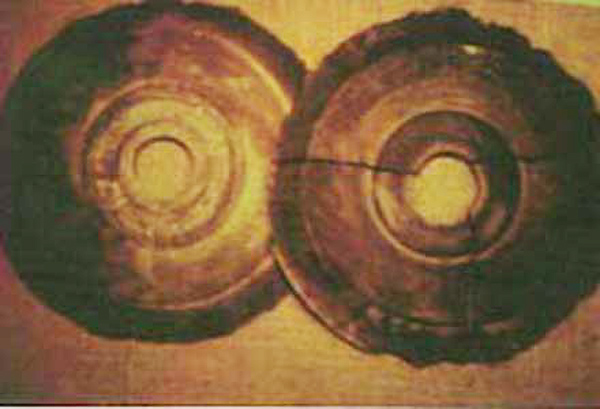
In 1974, Ernst Wegerer, an Austrian engineer, photographed two disks that met the descriptions of the Dropa Stones. He was on a guided tour of Banpo-Museum in Xian, when he saw the stone discs on display. He claims he saw a hole in the center of each disc and hieroglyphs in partly crumbled spiral-like grooves.
Wegerer asked the managers of Banpo-Museum for more information on the pieces in the showcase. The manager knew nothing of the stones' history, though she was able to tell a complete story about all the other artifacts made from clay. She only knew that the stone discs were unimportant "cult objects".
Wegerer was allowed to take one of the discs in his hand. He estimated their weight at 1 kilogram or 2 pounds, and the diameter at one foot. The hieroglyphs can't be seen in his photos, because they have crumbled away partly, and his camera's flash washed out the fine detail, such as the spiral grooves.
A few days after his visit, the manager was called away from her job without telling her why. She and the two stone discs vanished, according to Professor Wang Zhijun, the Director of the Banpo-Museum in March of 1994.
In the years since the discovery of the first disc, archeologists and anthropologists have learned more about the isolated Bayan-Kara-Ula area. Much of the information has been interpreted as corroborating the story recorded on the discs.
Legends supposedly still preserved in the area speak of small, gaunt, yellow-faced men who "came from the clouds, long, long ago". The men had huge, bulging heads and puny bodies and were so ugly and repellent that they were shunned by everyone. "Men with the quick horses" hunted down the ugly dwarfs. Strangely, the description of the "invaders" is said to match that of the skeletons originally discovered in the caves by Professor Chi Pu Tei.
Critics have largely rejected the above claims, arguing they are a combination of hoax and urban legend. For example, writer David Richie notes that the Dropa tales intrigued Gordon Chreighton, a Fellow of the Royal Anthropological Society and Royal Geographical Society. Upon investigation, Chreighton judged the sensationalistic Dropa-Extraterrestrial allegations to be "groundless," and detailed his findings in an article for Flying Saucer Review.
No traceable, credible evidence for this theory exists, or can be proven to have existed in the past. Proponents of the Dropa-stones story claim that this is the result of social disruption caused by the Chinese Cultural Revolution and of a conspiratorial coverup by Chinese authorities. However this story goes well beyond China. Its opponents claim it is long proven to be a forgery by Erich von Daniken.
Below is a detailed rebuttal of most sensationalistic Extraterrestrial/Dropa claims:
1. The discovery. There are no mentions of 'Tsum Um Nui' anywhere; as he is supposed to have fled China and died in Japan in the 1960s this cannot be negated by Cultural Revolution, Communist coverup theory. Also, there is no mention of the 1938 archaeological expedition to the Banyan Kara Ulla range. No "Peking Academy of Pre-History" ever existed.
2. Early Sources. The earliest mention of the story is in Erich von DamienŐs infamous 1968 book, Chariots of the Gods. The book has been widely criticized as unreliable; in fact, the vast majority of names and sources appearing in the book cannot be corroborated, and no existence of the following Soviet or Chinese scholars can be found anywhere outside this story: Cho Pu Tei, Tsum Um Nui, Ernst Wagener, Vyatcheslav Saizev, and Sergei Lolladoff. Most tellingly, Dniken gives his main source for the story as a Soviet science fiction writer Alexander Kazantsev; however Kazantsev himself disagrees with Dniken's account and says that it was Dniken who told him the story, not the other way around.
3. Later Sources. The 1978 book Sungods in Exile "edited" by David Agamon, appeared to lend support to the story of the Dropa, but Agamon admitted in the magazine Fortean Times in 1988 that the book was fiction and that its alleged author, a British researcher named Dr. Karyl Robin-Evans, was imaginary. Some websites claim to show a photo of Dr Robin-Evans with the Dalai Lama. A frail, old man assisted by the current Dalai Lama, the photograph is quite recent and can not be Dr Robin-Evans -- he died in 1978, according to Hartwig Hausdorf.
4. Translation. There is absolutely no precedent for an unknown language being successfully deciphered. All lost ancient languages have been rediscovered only because they survived in forms familiar to scientists. Even in such cases, deciphering and understanding these older language forms and their scripts has usually taken decades for multiple teams of highly competent linguists, and their findings are constantly being debated and updated. Many ancient scripts (notably Linear A from the island of Crete and Rongorongo from Easter Island), have defied deciphering precisely because they cannot be linked to any known language. Given these facts, there would be even greater difficulties in translating a truly extraterrestrial language. It is therefore highly unlikely that a single Chinese scholar with no reported background in linguistics could single-handedly decipher an alien script or language in his spare time.
5. The Disks. All that exists of the supposed alien disks are several wide-angle photographs. The disks photographed, firstly, do not match the described "12-inch disks"; the disks photographed are very large. Secondly, the photos show none of the supposed deep grooves. Finally, absolutely no photos, descriptions, analyses or any other evidence of the actual 'alien script' appear anywhere at all.
6. The Evidence. The disks were supposed to be stored in several museums in China. None of these museums have any traces of these disks, nor can any be found of the ones supposedly sent to USSR for analysis.
7. The Dropa Tribe. In actuality the Dropas are nomadic herders who inhabit most of the northern Tibetan Plateau. The Ham are also inhabitants of Tibet, and traditionally have supplied Tibet's warriors: many of the 13th Dalai Lama's bodyguards during his escape from the Chinese invasion were Ham Tibetans. The word "Dropa", according to Chrieghton, describes the nomadic residents of Tibetan highlands, and can be roughly translated as "solitude" or "isolated". Furthermore, Chreighton described the Dropa as not resembling "troglodytes", or as stunted; on the contrary, they tend to be rather large and sturdy, befitting their occupation as herders. (Richie, 95-96)